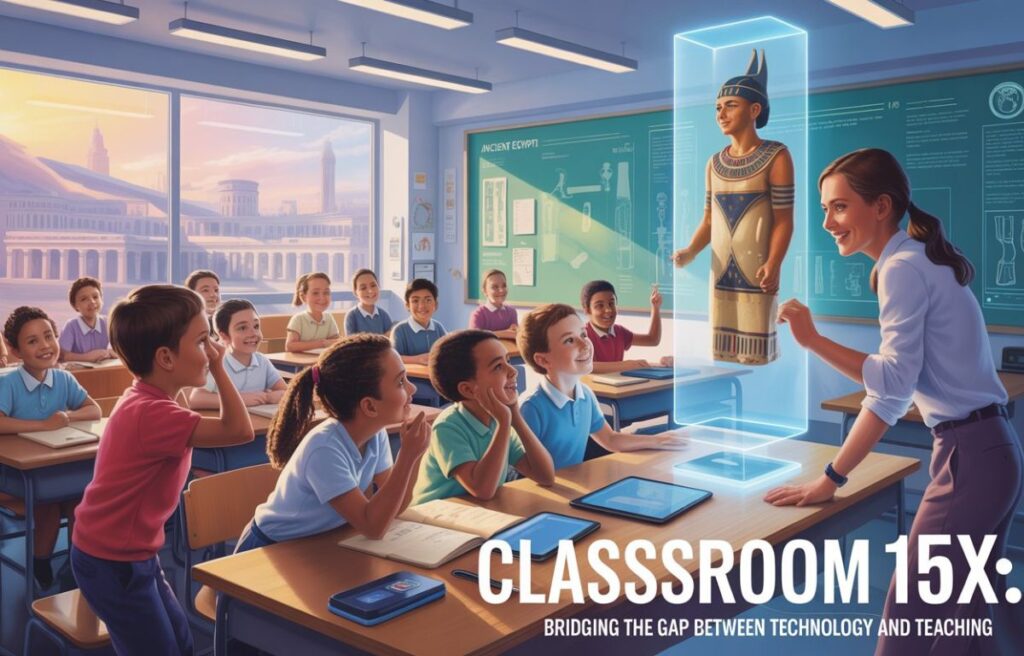In today’s fast-paced world, technology is no longer just a tool; it’s the backbone of modern education. Classrooms buzz with digital devices, and students navigate their learning journeys through apps and online resources. As we move further into the 21st century, integrating technology in education has become not just beneficial but essential. Enter Classroom 15X—a transformative concept designed to bridge the gap between traditional teaching methods and cutting-edge technology. This innovative approach aims to redefine how educators engage with students while fostering an environment ripe for creativity, collaboration, and critical thinking. Are you ready to explore what Classroom 15X can do for both teachers and learners? Let’s dive deeper into this exciting educational evolution!
The Concept of Classroom 15X and Its Purpose
Classroom 15X is a transformative approach designed to enhance the educational experience by merging technology and teaching. The core idea revolves around integrating advanced digital tools into everyday learning environments.
At its heart, Classroom 15X aims to empower both educators and students. It encourages interactive lessons that spark creativity and engagement, making learning more dynamic. Traditional methods often fall short in capturing today’s tech-savvy learners’ attention.
With this initiative, classrooms evolve from passive spaces into hubs of innovation. Teachers can utilize diverse resources like online platforms, multimedia content, and collaborative tools that foster teamwork among students.
The purpose extends beyond mere integration; it focuses on preparing learners for a rapidly changing world. By embracing Classroom 15X, education shifts towards developing critical thinking skills essential for future challenges.
Benefits of Integrating Technology in the Classroom
Integrating technology in the classroom opens up a world of possibilities for both teachers and students. It enhances engagement, making lessons more interactive and dynamic.
With tools like virtual reality, learners can explore concepts in ways that textbooks simply cannot offer. Imagine walking through ancient civilizations or conducting science experiments without any risks involved.
Technology also fosters collaboration among students. Platforms such as Google Classroom allow seamless communication on projects, promoting teamwork even outside school hours.
Moreover, personalized learning becomes achievable with adaptive software tailored to individual needs. This helps cater to diverse learning styles, ensuring everyone progresses at their own pace.
Access to vast resources online broadens horizons too. Students can find supplementary materials easily, enriching their understanding of topics covered in class.
Integrating technology prepares students for future careers by developing essential digital skills early on. These competencies are vital in today’s job market.
Challenges Faced by Educators and Students in Adopting Technology
Adopting technology in classrooms is not without its hurdles. Educators often grapple with limited training on new tools. This gap can lead to frustration and hesitation in implementation.
For students, access to devices isn’t always guaranteed. Not every learner has a laptop or tablet at home, creating disparities that hinder participation.
Moreover, the rapid pace of technological advancements complicates things further. Teachers must constantly update their skills just to keep up.
Distractions also pose a significant challenge. While technology can enhance learning, it can also divert attention away from lessons when not managed effectively.
Resistance to change is common among both educators and students. Some may prefer traditional teaching methods over digital approaches, making integration more complex than anticipated.
Strategies for Implementing Classroom 15X
To effectively implement Classroom 15X, start with training sessions for educators. Familiarity with technology tools boosts confidence and enhances teaching methods.
Next, integrate a mix of traditional and digital resources. This approach encourages diverse learning styles while keeping students engaged.
Establish a collaborative environment among teachers. Sharing experiences and best practices fosters innovation in lesson plans and classroom activities.
Involve students in the process. Gather feedback on what works well or needs improvement to create an inclusive atmosphere that values their input.
Regularly assess the impact of technology on student performance. Use analytics to track progress and identify areas for further development within the Classroom 15X framework.
Conclusion: The Future of Education with Classroom 15X
The landscape of education is rapidly evolving. As more schools embrace the Classroom 15X model, we see a shift toward an environment where technology and teaching coexist harmoniously. This innovative approach not only enhances learning experiences but also prepares students for a tech-driven world.
Classroom 15X fosters collaboration between educators and students, breaking down traditional barriers. It encourages active participation, critical thinking, and creativity—all essential skills in today’s society. The integration of technology becomes seamless when teachers are equipped with the tools they need to engage their students effectively.
Success stories from various institutions illustrate that the journey might have challenges, yet the rewards are significant. Schools adopting this framework report higher student engagement levels and improved academic performance.
As we move forward, it’s clear that embracing models like Classroom 15X will be pivotal in shaping future educational practices. Educators who adapt to these changes can expect to foster an enriching learning atmosphere where every student thrives in the digital age.







